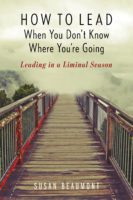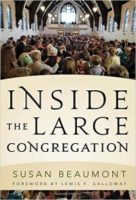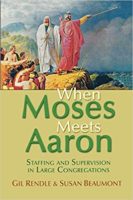A new calendar year invites planning. We need to finalize a budget and many are eager to imagine life beyond COVID. Unfortunately, we are still in a season of not knowing. Will the vaccine be effective and allow a safe return to in person engagement? Which of our constituents will be back and will new online followers stay connected? Anxiety builds as we plan for a year that involves so many unknowns. How can we plan when we don’t know what is to come?
Paul Shoemaker from the Wharton School reminds us that we are likely to make one of two fundamental errors when planning in seasons of great unpredictability. We may underpredict the amount of long-term change on the horizon. “As soon as a vaccine is widely available, we will be able to return to life and ministry as we knew it in 2019.” This approach leads to stagnation and the absence of adaptation. Most organizations make this error.
Alternatively, we may overpredict the amount of long-term change on the horizon. “Nothing familiar will remain. We are going to have to reinvent everything!” This approach often leads to paralysis, or self-fulfilling predictions of contraction.
Planning When You Don’t Know What You Don’t Know—Yet
A solution? Consider scenario planning. Scenario planning is a disciplined method for imagining possible futures. You chart a middle ground between underpredicting and overpredicting change. You do not have to identity all possible future possibilities to do effective scenario planning. You do need to name key uncertainties and imagine plausible, relevant scenarios.
Scenario planning acknowledges the existence of three classes of knowledge:
- Things we know we know. Traditional planning approaches project these things forward, recognizing that there is continuity and momentum in the world of Church. People will still have a felt need to connect with God and community going forward. We will still have a mortgage to pay. Some level of core staff will be required.
- Things we know we don’t know. This is the body of knowledge that we know will impact us, we just don’t know how—yet. For example, you can identify the number of pledging units that disappeared during the pandemic. You do not know what the drop-off suggests, or how those unpledged units will behave moving forward. Does it mean that people are afraid to commit to a pledge but will continue giving at previous levels? Have people lost their ability to give? Have they disconnected from the congregation? Although we don’t know answers to these questions, we can create scenarios for different outcomes that are somewhat informed.
- Things we don’t know we don’t know. This is the category that presents the biggest challenge in planning. We aren’t aware of events on the horizon that haven’t yet happened. The emergence of pandemic, political uncertainty, social-justice upheaval and natural disasters all fall into this category.
Traditional planning approaches invite us to work with the things we know. Scenario planning invites us to engage the last two categories of knowledge. Scenario planning requires intellectual courage to embrace evidence that does not fit our current conceptual maps, especially when that evidence threatens our very existence.
A Scenario Planning Process
There are a variety of approaches to scenario planning and ways to enhance the process with statistical modeling. However, at its core the principles are quite simple. If you want to give the process a try, you can follow these ten streamlined steps:
- Claim a planning time frame and a purpose. How far out are you projecting and what are the key issues you are addressing with your plan?
- Name the certainties in your planning time frame. Outline the things you know you know. This should offer some reassurance that not everything is in flux.
- Brainstorm the key uncertainties that will impact the issues you are concerned about. Here is a start. What would you add or subtract, given your planning horizon and your planning issues?
| Giving Trends | Rise of the Nones | Post-Christian culture |
| State of the Economy | Evolution of Technology | Political Divisiveness |
| Use of our Building | In person vs. online engagement | Shifting Demographics |
| Effectiveness of a Vaccine | Perceptions about Safety | Uncertainty in the Denomination |
- From the list you have assembled, select two or three of the most important unknowns—uncertainties whose outcomes (once known) are likely to dramatically influence your organization in the season for which you are planning. We will call these your key driving forces.
- Explore the internal and external trends that shed some light on your key driving forces, so that you understand as much about them as is currently knowable.
- Create four possible scenarios by combing various strings of possible outcomes of your key driving forces. Make each scenario plausible, relevant, and challenging. Avoid best-case, worst-case, and business-as-usual scenarios. Check your scenarios for internal plausibility. If this outcome happens, would that outcome also realistically occur? For example, what does the future look like if the vaccine is less effective than imagined, people continue to prefer online over in person engagement for the whole year, and giving patterns hold steady?
- Construct a rich narrative of what the organization would look like under each of the four scenarios. Attach a clear identifying title to each scenario, for example:
- A Brick-and-Mortar Future
- All Online
- Moving Forward without a Denomination
- Keeping All Our New Friends.
- Assign a probability or confidence range to each scenario.
- Keep iterating your scenarios until one begins to feel like the best choice for informing action now.
- Identify your learning needs. What do you need to continue to study, observe and experiment with? What new metrics will you need to develop for evaluation purposes?
A liminal season can be a rich time to imagine, assess, and engage new possibilities. Scenario planning can help you along the way. Embracing what you don’t know is key to forward action now.
Susan Beaumont is a coach, educator, and consultant who has worked with hundreds of faith communities across the United States and Canada. Susan is known for working at the intersection of organizational health and spiritual vitality. She specializes in large church dynamics, staff team health, board development, and leadership during seasons of transition.
With both an M.B.A. and an M.Div., Susan blends business acumen with spiritual practice. She moves naturally between decision-making and discernment, connecting the soul of the leader with the soul of the institution. You can read more about her ministry at susanbeaumont.com.




